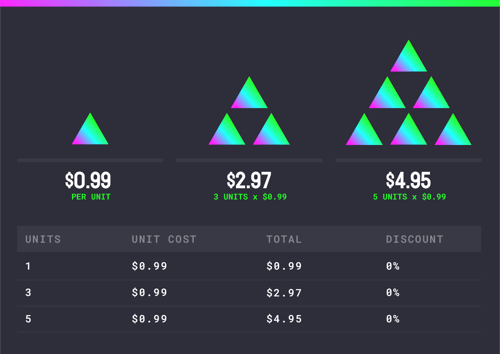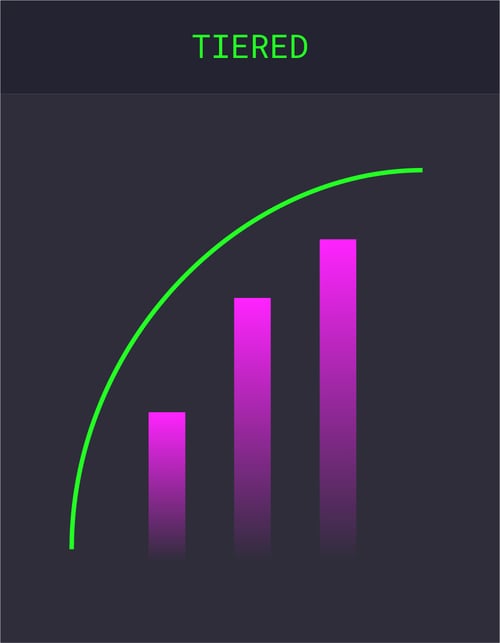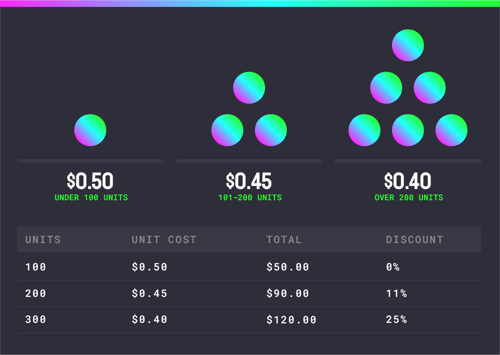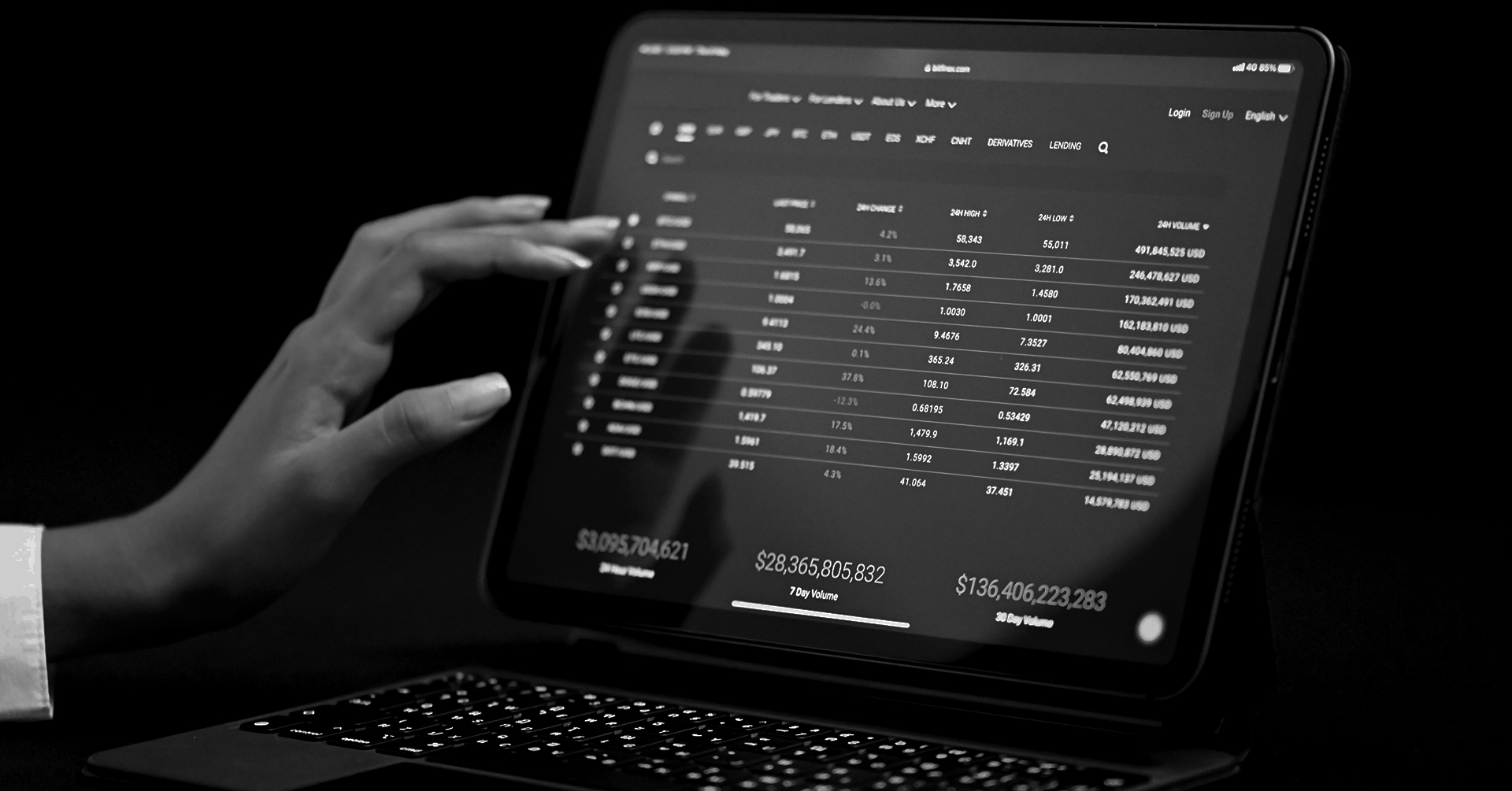Usage-based pricing. You've heard of it. You've seen the competition do it. You've had customers request it. Now you want to implement it but want to find out the ins and outs of usage-based pricing and how it will affect your business. We will help you learn all about usage-based pricing and the impact it has on your business.
Customers find this pricing model appealing because there is a direct correlation between the value harnessed by their business and the price they pay. It is also affordable for customers and they get the most bang for their buck which makes this pricing model appealing.
The subscription and sharing economy has emphasized transparency, personalized pricing, and real-time tracking. Subscriptions have made it easier for companies to generate revenue in recent years. But a recent report found that 45% of SaaS companies have implemented some form of usage-based pricing, which may be attributed to the fact that this type of pricing can lead to more attractive client-oriented services and ultimately drive revenue growth.
Table of Contents
-
What is usage-based pricing?
-
Types of usage-based pricing models
-
Benefits of a usage-based pricing model
-
Challenges of Usage-Based Pricing
-
Forecasting Revenue with usage-based pricing
-
Things to remember before switching to usage-based pricing
-
Is usage-based pricing right for your company?
-
Must-Have REQUIREMENTS FOR Usage-Based Billing Software
What is usage-based pricing?
Usage-based pricing is a pricing model in which customers pay for what they use. Since charges may fluctuate every period based on the actual usage, this type of billing can be more flexible and cost-efficient for both customers and providers.
Usage-based pricing has been around for decades, with cellular phones and utilities like gas, water, and electricity using this model to charge their customers. But it is now gaining popularity with both consumers and businesses as cloud computing becomes more prominent in our lives.
With a usage-based pricing model, businesses can charge customers based on their actual consumption of services or products. This pricing model is more accurate than fixed-rate or seat-based billing because it takes into account customers' actual consumption. In addition to improved efficiency and easier-to-understand bills, this model also provides an insight into customer consumption patterns over time and allows you to forecast usage.
Usage-based pricing helps companies broaden the addressable market, increase customer satisfaction, and lower churn. This pricing model is particularly useful during seasonal periods when customers use more or less but still want to pay for what they use.
Types of usage-based pricing models
1. Per-Unit Usage Pricing
Per-unit usage pricing is a subscription model that charges users on a per-unit basis rather than charging them for the amount of time they have the service active. This means that customers who consume more will pay more, and vice versa.

2. Tiered pricing
Tiered pricing is a pricing model that helps you capture more customers by incentivizing them to use your product or service in greater amounts. Instead of paying a set price per unit, your customers’ price per unit decreases as a certain tier volume is reached. With this model, your customer's subscriptions are adjusted or right-sized based on tiers or bands of usage.

3. Volume pricing
Volume pricing is similar to tiered pricing in that there are different tiers of discounts. However, with volume pricing, customers get the same discount on all items once they hit a certain tier.
Volume pricing is a great strategy for encouraging customers to buy more products by offering discounts when they do. This creates greater value for their money, and they're more likely to buy your product or service.

4. Dynamic usage-based pricing
Dynamic usage-based pricing lets you define your custom pricing models and allows you to easily adjust the prices of your products. This pricing model adapts to your business and lets you set prices based on the region or location of the customer, customer demand, value to the customers, time or date of the service used, etc.
5. Drawdown consumption pricing
With the Drawdown Consumption Pricing Model, you can create a flexible pricing model by defining a budgeted spend for multiple services. Customers can draw down on the allocated amount, based on the services they consume. You can also provide top-ups if they go over their limit and warn customers when they are close to their set thresholds. With this model, you have also the flexibility to configure tiered or rollover models.
Benefits of a usage-based pricing model
Usage-based pricing benefits both businesses and customers. By charging based on how much of your product or service is consumed, businesses encourage customers to make careful decisions about their spending.
Companies that adopt consumption-based pricing models outperform their competitors as they provide their customers with greater value and lower risk.
-
Lower upfront costs
The low initial investment is appealing to customers, allowing you to reach a wider customer base, which in turn can lead to increased sales.
-
Transparent pricing
Customers have direct access to their usage history and rates in real-time on-demand which builds trust and ensures transparency.
-
Improved customer retention
It improves customer retention as their pricing is always optimized based on the value they are receiving. Usage-based pricing gives you the option to pause customers' plans in case of low usage periods, rather than cancelling their plan. This helps you retain customers during slow periods or budget changes.
-
Data-based product and pricing intelligence
Companies benefit from having access to granular usage data. They can offer customized packages or upgrades to customers based on the usage patterns they see.
Knowing your customer preferences and how they use your product helps companies keep an eye on trends in the market. This also helps to anticipate changes in the market and stay ahead of your competitors.
Challenges of Usage-Based Pricing
When you adopt a usage-based pricing model, you should spend some time studying what kinds of offers will work best for your customers. You might need to overcome a few challenges when you first introduce usage-based pricing, but if you do your research and plan carefully, you'll be able to keep your customers happy.
-
Choosing the right value metric
One challenge of usage-based pricing is understanding the value of your products through the lens of your customer. To do this, start with core value metrics—that is, the metrics that match up with how much value your customers perceive your offering is worth to them. If you don't match that up with customers' perceived value, they would be unhappy and end up churning.
-
Effectively handling overages
Customers with high usage may see an increase in their bills when you switch to a usage-based billing model. This can be difficult for some companies to manage. Still, you can make the transition smoother by being transparent with your customers about upcoming changes, providing them full access to their usage reports via customer portals, and alerting them when they reach certain usage thresholds so that they don't exceed their allocated limits.
-
Predicting your revenues
Forecasting future revenue is difficult when you're using consumption-based models because customer usage varies every period and you possibly cannot guarantee a steady flow of revenue. Offering minimum commitment plans that combine fixed and variable fees can make forecasting easier. Another step companies can take is to track customers' usage before they adopt the usage-based pricing model. This will help them generate historical data that can be used to forecast usage.
Alternatively, many businesses in the IoT, Communications, and XaaS spaces are shifting to pre-paid consumption draw-down models—this approach enables customers to buy a "bucket" of credits and then deplete those credits across a multitude of services based on their usage.
-
Choosing the right usage-based pricing model
Customers like to feel they are in control of their spending, and they may be put off if pricing is confusing or hidden. To improve your customer experience, it helps to have a clear and transparent pricing strategy.
Understand which pricing model will work best for your customers and your business model. Is it event-based, value-based, and/or tiered pricing? Or should you opt for a hybrid approach where you charge a flat or dynamic recurring fee for access to basic features?
-
Getting your customers onboard
Customers might be apprehensive when they start to use a service under a usage-based billing model because they are not accustomed to paying for what they consume. However, providing full access to your customers' usage metrics through a customer portal helps them see how their consumption correlates to the flat rate that they previously paid.
You can prepare your customers for the new flexible pricing model by telling them about the benefits they'll see once they begin to use it. Focus on creating a set of customer communications strategies that will help them understand how much they're using and how much they'll be charged each month.
-
Choosing a usage-based billing solution
When you switch to usage-based pricing, it can be hard to find a billing solution that tracks large volumes of usage data efficiently. You need to find a billing system that can track complex usage and rating scenarios as your business grows. As your organization scales, LogiSense can adapt to fit your unique needs. With LogiSense, you have an entirely API-driven cloud platform accessible through available RESTful APIs.
Forecasting Revenue with usage-based pricing
Usage-based pricing models charge customers based on usage, which means the revenue generated is variable and determined by the number of resources a customer uses. To correctly forecast the revenue generated from usage, you should consider historical sales data, annual recurring revenue (ARR) history, and customer usage patterns.
Forecasting recurring revenue requires looking at the previous year's annual recurring revenue (ARR) and usage. The other key metrics to look at when forecasting recurring revenue are monthly recurring revenue (MRR), customer lifetime value (CLV), customer acquisition costs (CAC), and customer churn rate. Most forecasting is based on accurate data, which can then enrich revenue forecasts. An agile usage-based billing system can provide accurate usage data for recurring revenue forecasts.
Things to remember before switching to usage-based pricing
Usage-based billing and recurring revenue models are the future, thanks to their customer-friendly nature. The usage-based billing model is a popular choice for businesses because it allows them to charge customers based on how many resources they use. On the other hand, it provides the customers with flexibility in how they use the product.
You may want to overhaul your billing system to incorporate usage-based billing to meet customer demands for transparency and flexibility. However, it can't be done overnight—it requires thorough planning and strategic execution. Here are some things to consider before you switch to a usage-based billing solution.
-
Identify the right usage billing metric
Identifying the right metrics can help you measure the value your customers get from your product or service. For SaaS or IoT businesses, it's usually based on technical metrics like data, API calls, minutes, etc. Whichever metric you choose it should be scalable and predictable so that your customers can budget accordingly. When possible, try to map usage metrics to customer outcomes.
-
Choose a usage-based pricing model
Choose the pricing model that best suits your business. You will want to consider what works for your product, who your customers are, and what they need. You may offer flat-rate pricing or tiered pricing, or you can charge a recurring fee for access to basic features and charge extra per usage.
-
Choose a robust billing solution
Consider a configurable billing system that can handle complex usage and rating scenarios. Check that it integrates with the tools you already use. As your business grows and becomes more complex, so too will your need for a more sophisticated billing platform. Choose a modern billing solution that grows with you.
-
Automate usage-based billing
When you switch over to usage-based billing, make sure that your billing processes are automated to ensure accurate and seamless charging of your customers. Automating your billing processes will keep your back office organized and free up time and resources while keeping costs in line.
-
Update Your Marketing Material
To ensure that your online marketing materials, including your website and brochures, are all up-to-date with your new pricing model, be sure to update them. This will help you launch your pricing strategy and get people excited about the fair and flexible model you offer your customer
-
Train your Sales Team
Prepare your sales team to sell your new pricing model by providing them with the right tools and education. When you arm your sales teams with the right information, they'll not only sell but also educate customers on the benefits of your offering and pricing, potentially warding off customer churn. By using an intelligent billing system, you can track which customers consistently exceed their usage limits and upsell an offer to upgrade their package. Alternatively, if sales teams notice a downward trend in customer usage, they can offer a more personalized package to ensure customer retention.
-
Educate your Customers
Understanding how a usage-based billing model works and its benefits can make it much easier for your customers to accept the new pricing plan. A sudden increase in cost that they weren't expecting would be unwise. To help, provide your customers full access to their usage reports, and a breakdown of their real-time usage through customer portals and notifications alerting them of reaching threshold events.
Is usage-based pricing right for your company?
Usage-based billing is mutually beneficial for both companies and their customers. Customers can get only the products and services they require and only be charged for what they use, while companies gain more happy customers. Usage-based billing is a great option for many SaaS companies, but it may not be the right fit for every business. For those who can benefit from it, the numerous benefits are significant.
The following types of businesses can get the best benefit from usage-based billing:
- Cloud apps and infrastructure companies
- IoT (Internet of Things) companies
- Software as a service (SaaS) companies
- Utility companies
- Telecommunication businesses
- Financial services companies that process a high volume of transactions
- OTT service providers, streaming service companies, etc.
- Telematics industry
If your customers want flexibility and convenience, consider switching to a usage-based billing model. Usage-based pricing is best for businesses that offer high-volume transactional services and can track customer usage.
Must-Have REQUIREMENTS FOR Usage-Based Billing Software
Now that you’ve been convinced of the benefits of usage-based billing, it’s time to find the best provider for your company. Consider these features when searching for the best usage-based billing solution:
1. Scalability & Adaptability
Billing should be scalable and flexible enough to accommodate your business model's evolution. A scalable billing solution allows your business to grow efficiently and adapt quickly to changing market needs. To be scalable, usage-based billing must be automated.
Manual invoicing for metered billing is costly, slow, and prone to errors which can cause irreparable damage to customer relations.
2. Automation
Despite billing automation's obvious benefits, you might be surprised to learn that very few billing providers are completely automated. A fully automated billing system should have the capability to ingest and mediate billions of usage events, a fully automated workflow engine, automated notifications, and invoicing. With these processes in place, you can streamline bill cycle processing, maximize efficiencies and reduce revenue leakage.
3. Robust Mediation Engine
A critical component of the usage-based pricing model is the ability to normalize usage data at scale. While a legacy billing system may be able to handle some basic mediation needs from a few data sources and configuration rules, it will not be able to handle sophisticated or high-volume use-cases.
To ensure that your invoices are accurate and complete, you need to be sure that the mediation process is automated. You can do this by choosing an advanced mediation platform that can automate the process in real-time. Automated mediation allows you to manage complex data and keep costs under control.
4. Business Agility
Many billing solutions are biased towards the old seat-based model and require massive custom development to enable an agile usage-based billing model. If you need to customize a specific functionality that isn't already in the tool, you either have to write new code or integrate it with third-party software. Outdated billing systems can't handle more complex usage pricing models with multiple product offerings.
You need a billing solution that can keep up with the pace of your business. If you want to make changes to your product catalog and pricing structure, your billing solution should be able to accommodate them in real-time.
5. Reporting & Analytics
You generate a lot of data, but if you're not analyzing it, you're leaving money on the table. Complete visibility over customer behavior and an understanding of key performance metrics such as churn and customer retention rates, along with customer usage patterns, will help you understand why they occur and predict future trends. A good understanding of the trends may also help sales create cross-sell and upsell opportunities.
LogiSense offers a powerful and flexible reporting framework that enables you to report on customer activity throughout the relationship. This can include products they have purchased, usage history, and other relevant information.
6. Compliance
Processing sensitive data is a big responsibility, and it's important to keep your customers' data safe. A billing platform should ensure that it is secure and that there are applicable levels of governance in place to protect the data. Intelligent billing platforms should be able to protect your customer's information under the General Data Protection Regulation (GDPR) and California Consumer Privacy Act (CCPA). The most advanced solutions in the market will allow you to process and store sensitive customer data in the region your customer resides.
Businesses today are frequently the targets of data breaches. If you don't have sufficient security protocols in place, your business will suffer when confidential customer information is stolen. You'll also have to pay hefty fines.
Conclusion
The future of billing is usage-based. Most XaaS customers are demanding a shift to usage-based pricing. Many of your competitors have already made the switch, and if you don’t follow suit now, you will be left behind!
To introduce usage-based billing, you may need to upgrade existing systems and invest in educating customers about the benefits of usage-based plans. However, with a reliable usage-based billing system in place, you can efficiently meter customer usage and delight them by offering fair and personalized plans that best fit their needs.
To learn how LogiSense can help you take your revenue potential to the next level, apply for a free 30-day Test Drive program with LogiSense or contact one of our billing experts to schedule a demo.
About the Author
Ryan Susanna /
Ryan is a seasoned telecommunications expert with a broad background in both the service provider and software vendor sides of the business. Ryan is currently responsible for worldwide sales at LogiSense. During his tenure, Ryan has held executive level positions including Senior Sales Executive, and Director of Sales. In these roles, he has provided strategic sales, product, and market guidance for our next generation IP service management solutions.
